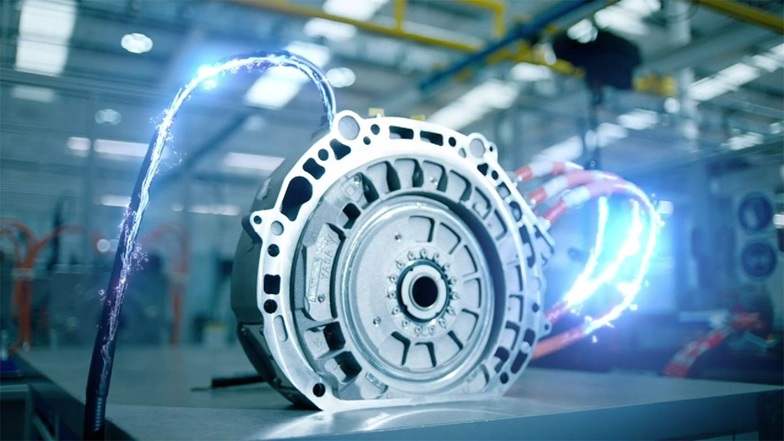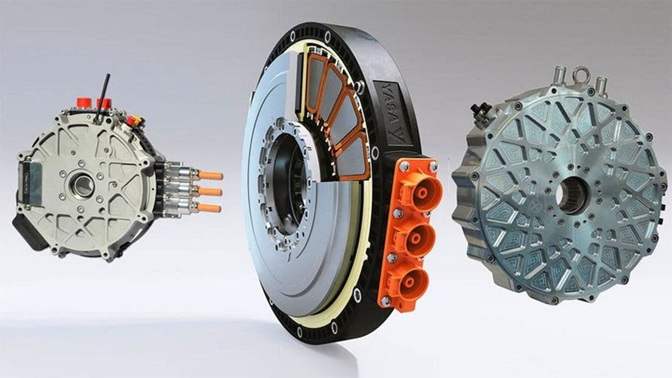Mercedes-AMG Electric Revolution: Why Axial-Flux Motors Could Change the EV Era
Electric vehicle technology is evolving at lightning speed, and Mercedes-AMG is preparing to shake things up in a big way—not with batteries or flashy software, but with an innovation hiding in the heart of its cars: axial-flux electric motors.

As the world watches traditional automakers transition toward electric mobility, Mercedes-AMG—the high-performance division of Mercedes-Benz—is ready to make its own bold entrance into the 100% electric performance arena. This move won’t just be about sleek design or longer range. The real headline is under the hood (or more accurately, beneath the floor): a new kind of electric motor that could revolutionize the way electric cars are built and perform.
Mercedes-AMG is gearing up to launch its first fully electric supercars, and they’re not messing around. Two major models are on the horizon:
- A Mercedes-AMG GT sedan, set to challenge the likes of the Porsche Taycan.
- A high-performance SUV, designed to rival the upcoming electric Porsche Cayenne.
Both of these machines will be built on AMG’s new AMG-EA platform, featuring an 800-volt architecture for faster charging and better performance. But while the automotive world may be drawn to their aggressive design and expected power, it’s the motor inside that will truly set these vehicles apart.

Let’s break it down simply. Most electric vehicles today use radial-flux motors—a tried-and-true design where magnetic flux flows perpendicular to the motor’s axis. These motors are reliable and efficient, but they’ve hit a plateau in terms of size and performance.
Enter axial-flux motors, a much more compact, efficient, and powerful alternative. Instead of the magnetic field moving outward (radially), it flows parallel to the axis—like the spinning of a disc rather than the roll of a can.
This difference in design means axial-flux motors can:
- Be up to six times shorter than radial motors.
- Offer three times more power density.
- Deliver significantly better weight-to-power ratios.
- Enable lower installation in the chassis, which lowers the car’s center of gravity and enhances handling.
Mercedes-AMG’s axial-flux motors are based on technology from YASA, a British startup they acquired in 2021. YASA has already proven its motors in high-end hybrid supercars (like those from Ferrari), but now AMG plans to bring them into mass production for pure EVs.
Imagine this: a 24 kg axial-flux motor that can generate up to 480 horsepower. Stack two of them in a dual-motor setup and you’re already pushing close to 1,000 hp and 800+ Nm of torque. And that’s before you get into more aggressive tri-motor or quad-motor designs. What does that mean for drivers? Unmatched acceleration. These next-gen AMGs could become the fastest Mercedes vehicles ever built, at least in terms of 0-60 times.
But speed is only part of the story. Because axial-flux motors are so compact and lightweight, they open the door for more creative engineering:
- Better weight distribution.
- Lower center of gravity.
- Greater efficiency thanks to reduced mechanical losses.
In high-performance electric cars, every kilogram matters. These motors give AMG an edge where it counts most.
Challenges for Axial Flux Motors
With all these benefits, you might wonder why axial-flux motors aren’t already standard in EVs. The answer: they’re extremely difficult to manufacture.
Building them requires:
- Advanced laser welding techniques.
- AI-assisted manufacturing processes.
- Specially shaped rectangular copper wires (instead of the usual round ones).
- Precise magnet alignment and unique surface treatments.
These processes are new, complex, and currently expensive. That’s why Mercedes is starting with its elite AMG models, where price is less of a concern, and performance is everything.
However, the long-term goal is clear: refine the process, reduce costs, and eventually bring axial-flux motors to the mainstream EV market. Just like how touchscreen infotainment or regenerative braking started in luxury cars and made their way down, this tech could follow the same path.
Mercedes-AMG’s bold step into axial-flux motors isn’t just a flex—it’s a sign of where the industry is heading. As electric vehicles continue to evolve, motor innovation will be just as important as battery breakthroughs.
The shift to axial-flux motors offers:
- More power with less weight.
- Greater efficiency.
- Roomier designs, since the motors take up less space.
- And possibly, in the future, more affordable performance EVs once the tech scales.
If Mercedes-AMG can succeed in mass-producing these motors—and all signs point to “yes”—they could become the benchmark for electric performance vehicles for years to come.
While the spotlight often shines on battery range, software features, or autonomous driving, Mercedes-AMG is showing us that real innovation sometimes starts with the mechanical core. By betting big on axial-flux motor technology, AMG isn’t just making fast electric cars—they’re setting the stage for a new era of high-performance EV engineering. It’s not just about going electric. It’s about doing it better, faster, and smarter—and if AMG’s axial-flux motor gamble pays off, they might just leave the competition in the dust.
Related Post
